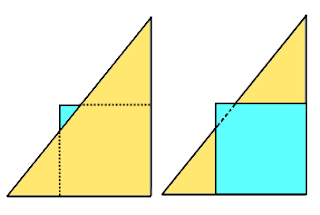Consider a two player coin game where each player gets turn one by
one. There is a row of even number of coins, and a player on his/her
turn can pick a coin from any of the two corners of the row. The player
that collects coins with more value wins the game.
Develop a strategy
for the player making the first turn, such he/she never looses the game.
Note : The strategy to pick maximum of two corners may not work.
In the following example, first player looses the game when he/she uses
strategy to pick maximum of two corners.
============================================================
Example :
18 20 15 30 10 14
First Player picks 18, now row of coins is
20 15 30 10 14
Second player picks 20, now row of coins is
15 30 10 14
First Player picks 15, now row of coins is
30 10 14
Second player picks 30, now row of coins is
10 14
First Player picks 14, now row of coins is
10
Second player picks 10, game over.
The total value collected by second player is more (20 +
30 + 10) compared to first player (18 + 15 + 14).
So the second player wins.
===================================================================
This is the unbeatable strategy!






